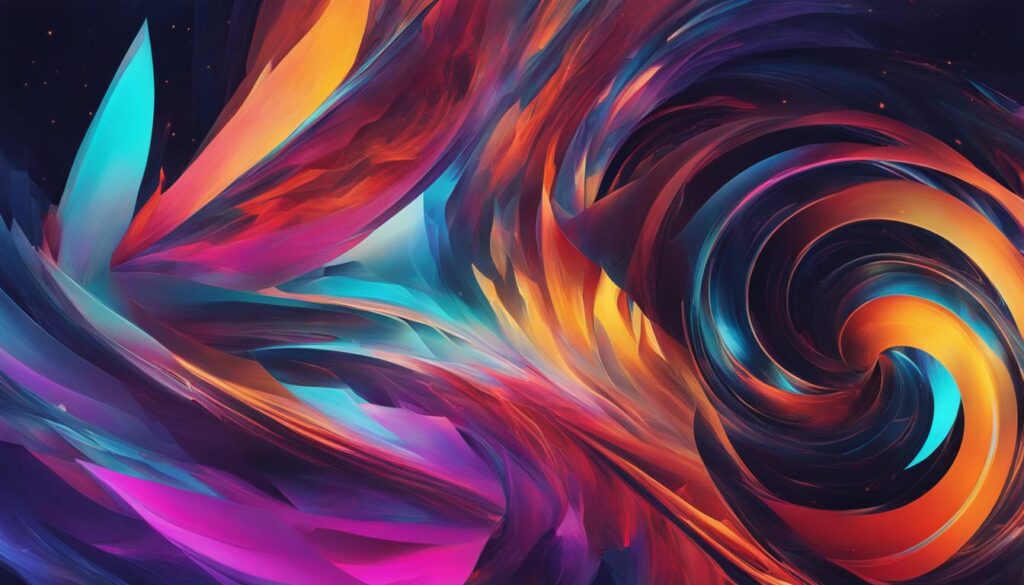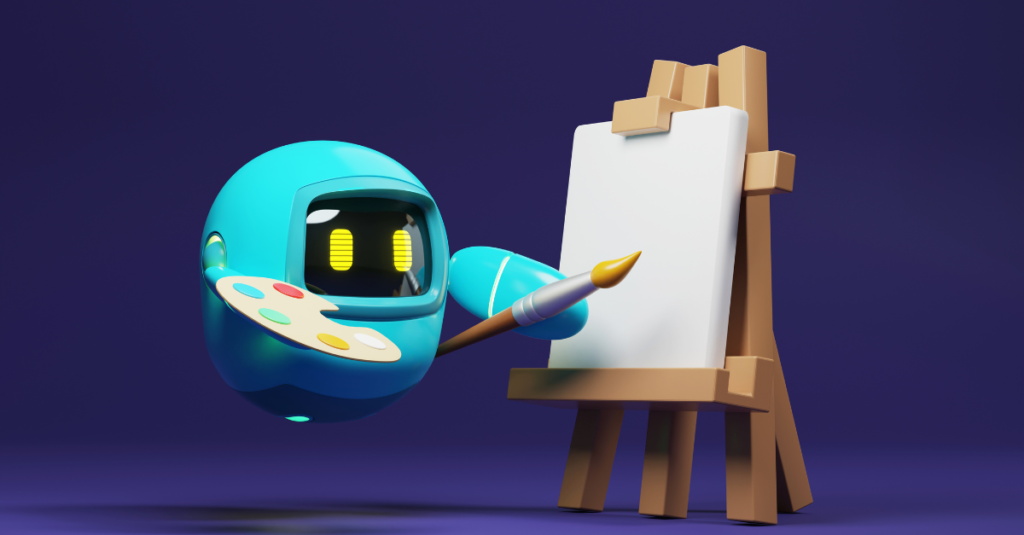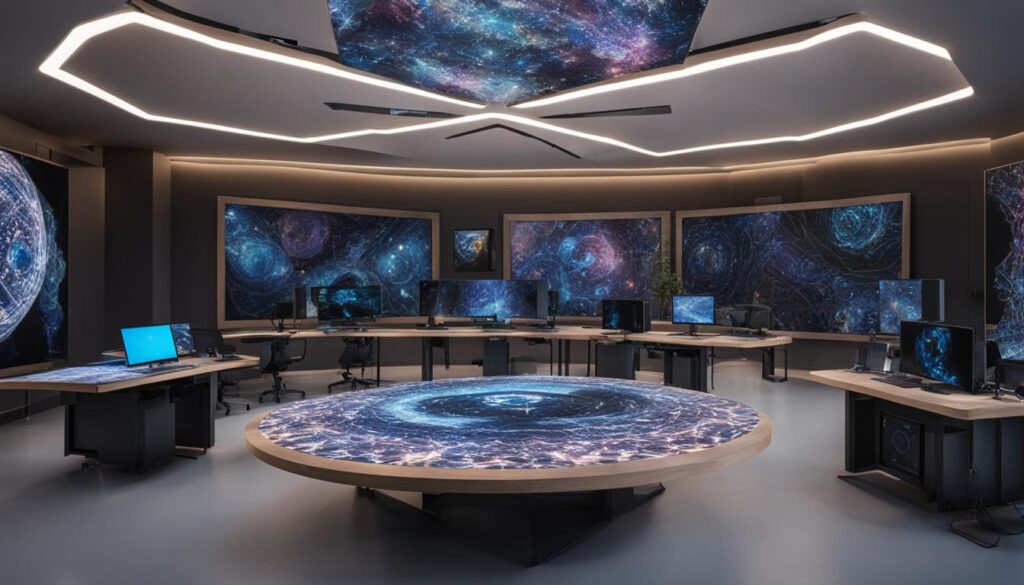
Table of Contents
- Image creation with AI: A Game Changer for Writers
- Best Practices for Using AI-Generated Images in Digital Marketing
- Understanding the Basics of AI Image Generations
- Enhancing AI Image Generations with Style Transfer
- Ethical Considerations in AI Image Generations
- Applications of AI Image Generations
- Conclusion
- FAQ
Image creation with AI is revolutionizing the way we generate visuals for various purposes. With the power of artificial intelligence and machine learning, AI-powered image creation tools can generate stunning and realistic images that were once unimaginable. By understanding the basics of AI image generation and utilizing advanced techniques, we can unlock a whole new level of creativity and streamline our image creation processes.
Image creation with AI: A Game Changer for Writers
AI image generation is not only transforming visual content creation but also revolutionizing the creative process for writers. With tools like Midjourney, writers can now harness the power of AI-generated images to inspire their storytelling and enhance their narratives.
Midjourney, an innovative AI image generation platform, offers writers a wealth of possibilities by allowing them to generate AI images that align perfectly with their scenes, characters, and narrative concepts. Writers can simply describe what they envision in their images, and Midjourney’s AI algorithms will create visuals tailored to their specifications.
This AI-generated imagery provides writers with a powerful visual representation of their ideas, enabling them to better visualize their stories and infuse them with greater depth and detail. By incorporating AI-generated images into their writing process, writers can tap into a new level of creativity and bring their stories to life in ways they never thought possible.
Unlocking Creative Inspiration
- AI image generation offers writers a valuable source of creative inspiration, helping to spark ideas and ignite their imagination.
- By generating AI images that match the tone, setting, and mood of their stories, writers can immerse themselves in their fictional worlds and visualize their narratives more effectively.
- This visual aid not only enhances the writing process but also allows writers to experiment with different scenarios and explore new directions for their stories.
Best Practices for Using AI-Generated Images in Digital Marketing
AI-generated images have become an invaluable asset in digital marketing, allowing brands to capture their audience’s attention and convey information effectively. To ensure the best results and optimize the usage of AI-generated images in digital marketing campaigns, it is essential to follow some best practices.
Optimize Images for SEO
When incorporating AI-generated images into your digital marketing strategy, it’s crucial to optimize them for search engines. By including relevant keywords in image descriptions, alt text, and file names, you can increase the chances of your images being discovered by search engines and improve your website’s overall SEO.
Customize AI-Generated Images
To create a strong and cohesive brand identity, customize your AI-generated images to match your brand’s aesthetics and values. By tailoring the color schemes, fonts, and overall style of the images, you can create a visually consistent and recognizable brand presence across your marketing materials.
Ensure High-Quality AI Images
The quality of your AI-generated images plays a significant role in how your brand is perceived. Make sure to use high-resolution images that are visually appealing and professional. Investing in high-quality images will enhance the credibility of your brand and help establish a positive user experience for your audience.
Consider Copyright and Licensing
When using AI-generated images, it’s essential to be mindful of copyright laws and licensing agreements. Ensure that you have the necessary rights to use the images in your marketing materials to avoid legal issues. If you’re unsure about the usage rights of a particular image, it’s best to reach out to the image creator or consult legal professionals to ensure compliance.
AI image generations have the potential to transform the way we create visuals, revolutionizing the field of image creation. With the use of AI algorithms and advanced technologies, we can now generate realistic and high-quality images that were once unimaginable. Machine learning and deep learning techniques enable AI algorithms to analyze data and generate unique and creative outputs, allowing for the creation of visually stunning images that captivate audiences.
One of the key advantages of AI image generation is its practical applications across various industries. In advertising, AI-generated images can be used to create eye-catching and persuasive visuals that engage consumers and drive sales. In the film industry, AI-generated images can be used to create lifelike special effects and visual elements that enhance the overall cinematic experience. Additionally, AI image generation is also being utilized in design fields to generate textures, styles, and new design concepts, pushing the boundaries of creativity.
Transforming Image Creation
By harnessing the power of AI algorithms, image creation has been transformed into a more efficient and streamlined process. AI-generated images can be customized to fit specific requirements, allowing designers and marketers to create visuals that perfectly align with their brand identity and messaging. This level of customization not only saves time and resources but also ensures that the images produced are of the highest quality and relevance.
AI Algorithms for Image Generation
The heart of AI image generation lies in its algorithms. These algorithms are trained on vast amounts of data and are optimized to create realistic and diverse images. By analyzing patterns, shapes, colors, and textures, AI algorithms can generate visually appealing and highly detailed images. The continuous advancements in AI technology promise even more realistic and dynamic images in the future, further pushing the boundaries of what is possible in image creation.
Related Post: The Best AI Image Generators in 2024 You Need to Try Right Now
Understanding the Basics of AI Image Generations
AI image generations, powered by machine learning and deep learning techniques, have revolutionized the way we create and generate visuals. Through the use of AI algorithms, we can analyze data to produce realistic and high-quality images that were once unimaginable. By understanding the basics of AI image generations, we can delve into the intricate processes behind machine learning and deep learning in image generation.
Machine learning plays a crucial role in AI image generation by enabling algorithms to learn from data and improve their performance over time. These algorithms analyze vast amounts of data to recognize patterns, shapes, colors, and textures, which are then combined to generate visually appealing images. Deep learning complements machine learning by allowing the processing of large datasets and extracting meaningful features from them, resulting in more accurate and detailed image synthesis.
The Role of AI Algorithms in Image Synthesis
AI algorithms are at the core of image synthesis, where they utilize the learned knowledge from machine learning and deep learning to generate images. These algorithms employ techniques such as convolutional neural networks (CNNs), generative adversarial networks (GANs), and variational autoencoders (VAEs) to synthesize images that mimic real-world scenarios. Through the interplay between these algorithms and the training of AI models using vast datasets, we can achieve remarkable results in AI image generation.
As AI technology continues to advance, we can expect even more realistic and dynamic AI-generated images. The future of AI image generations holds exciting prospects, from enhancing creativity in various industries to automating image creation processes. By grasping the basics of AI image generations and staying updated with the latest advancements, we can harness the full potential of this transformative technology.
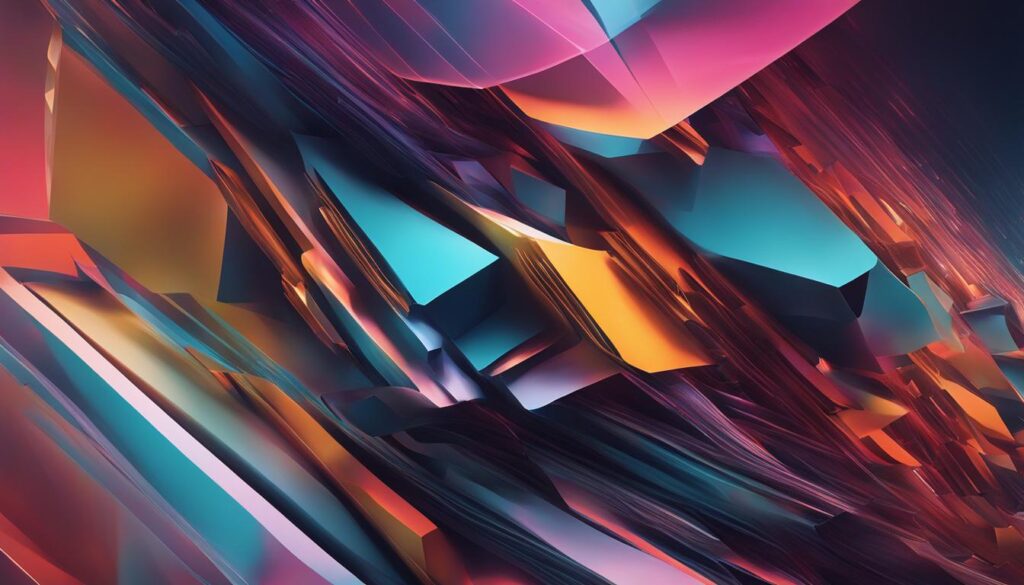
- Machine learning and deep learning techniques drive AI image generations, enabling the creation of realistic and high-quality images.
- Machine learning allows algorithms to learn from data and improve their performance, while deep learning processes large datasets to extract meaningful features.
- AI algorithms play a crucial role in image synthesis, utilizing techniques like CNNs, GANs, and VAEs to generate visually appealing images.
- The future of AI image generations holds exciting possibilities for enhancing creativity and automating image creation processes in various industries.
Enhancing AI Image Generations with Style Transfer
Style transfer is a powerful technique that can take AI-generated images to a whole new level. By combining the artistic style of one image with the content of another, style transfer allows for the creation of unique and visually stunning visuals. This technique, coupled with artistic filters, can transform AI-generated images into works of art that evoke specific moods and emotions, or align with a particular brand aesthetic.
To achieve style transfer, neural networks and pre-trained models are utilized. These models extract the style from one image and apply it to the content of another, making it possible to create images with a distinct visual style. Whether it’s a vintage, painterly, or futuristic look you’re after, style transfer can help you achieve it. By experimenting with different styles and filters, you can create AI-generated images that stand out and capture attention.
Artistic Filters for AI-Generated Images
- Watercolor: Transform AI-generated images into beautiful watercolor paintings.
- Cartoon: Give your AI-generated images a fun and playful cartoon-like appearance.
- Ink Sketch: Create AI-generated images with a classic inked sketch style.
- Oil Painting: Turn your AI-generated images into realistic oil paintings.
- Glowing Neon: Add a vibrant and electrifying glow to your AI-generated images.
With the power of style transfer and artistic filters, AI-generated images can become visually captivating and truly unique. This opens up endless possibilities for creative expression and allows for the creation of images that leave a lasting impression.
Related Post: Exploring The Top AI Video Generators in 2024
Ethical Considerations in AI Image Generations
As the field of AI image generation continues to advance, it is important to address the ethical considerations associated with this technology. One of the main concerns is the potential bias that can be present in AI-generated images. AI models learn from training data, and if that data is biased or lacks diversity, it can lead to the creation of biased images. To mitigate this, it is crucial to ensure that the training data used for AI image generation is representative and inclusive, encompassing a wide range of individuals and subjects.
Ensuring diversity and inclusivity in AI image creation is essential for creating images that are fair, accurate, and representative of society as a whole. By carefully selecting and curating diverse training data, AI models can learn to generate images that are free from bias and discrimination. This not only promotes fairness and equality but also allows for the creation of images that cater to a diverse audience, making them more relatable and inclusive.
In addition to addressing bias, another ethical consideration in AI image generation is the potential impact on human jobs. As AI technology advances, there may be concerns about the replacement of human workers in certain industries. It is important to be mindful of these implications and consider how AI-generated images can be used to complement and enhance human creativity and expertise, rather than replace it entirely. By finding a balance between automation and human involvement, we can harness the power of AI image generation while still valuing the skills and contributions of human creators.
Applications of AI Image Generations
AI image generation has found wide-ranging applications across various industries, revolutionizing the way we create visuals and automate image-related tasks. From the creative industries to marketing fields, AI-generated images have proven to be a valuable tool for enhancing productivity, creativity, and engagement.
AI in Creative Industries
In the realm of creative industries such as advertising, film, and design, AI image generation has become an indispensable asset. Artists and designers can leverage AI algorithms to generate hyper-realistic images, explore new textures and styles, and create unique designs. By automating certain aspects of the creative process, AI image generation allows for faster creation and iteration, freeing up time for artists to focus on higher-level tasks.
AI in Marketing
In the field of marketing, AI-generated images have proven to be highly effective in capturing the audience’s attention and conveying information. Marketers can utilize AI image generation to create visually stunning visuals that align with their brand identity and messaging. These images can be used in various marketing collateral, such as social media posts, website banners, and print materials, to enhance brand recognition and engagement. Moreover, AI image generation opens up possibilities for A/B testing, enabling marketers to optimize their visual content and drive better results.
AI for Image Automation
One of the key benefits of AI image generation is its ability to automate image-related tasks. Designers, marketers, and content creators can leverage AI algorithms to automatically generate images based on predefined styles, themes, or specifications. This automation not only saves time and resources but also ensures consistency and scalability in image creation. Whether it is generating personalized product images for e-commerce websites or creating customized visuals for social media campaigns, AI image generation streamlines workflows and enhances efficiency.
Related Post: Exploring The Top AI Tools for Writing Excellence in 2024
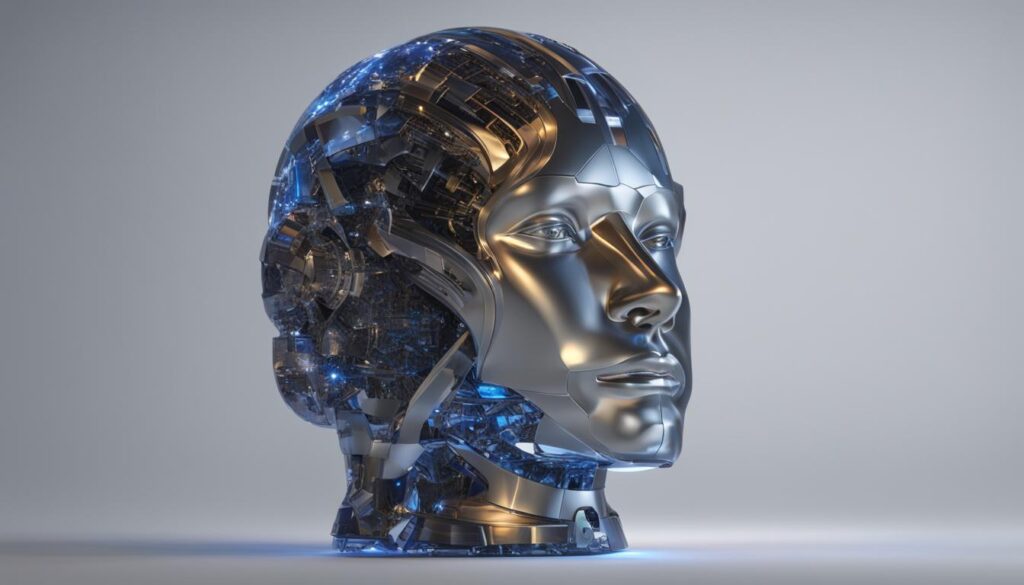
With its applications in the creative industries, marketing, and image automation, AI image generation continues to shape the way we create, engage, and communicate visually. As technology advances and AI algorithms become more sophisticated, the potential for AI image generation to drive innovation and transform industries is immense. Embracing this technology can lead to improved creativity, efficient workflows, and impactful visual storytelling.
Conclusion
AI-powered image creation has revolutionized the way we generate visuals, unlocking a new world of possibilities for artists, writers, marketers, and designers. With the power of artificial intelligence and machine learning, we can now create stunning and realistic images that were once unimaginable. By understanding the basics of AI image generation and utilizing advanced techniques like style transfer, we can enhance our creativity and streamline our workflows.
The future of AI image generation holds exciting prospects. As technology continues to advance, we can expect AI-powered image creation to become even more realistic and dynamic. This opens up endless opportunities for the world of visual creation, with practical applications across various industries including advertising, film, and design. AI-generated images can automate image creation processes, saving time and resources while enhancing creativity.
In conclusion, image creation with AI is here to stay. Through AI-powered image creation, we can unlock the full potential of our creativity and take it to new heights. By embracing this technology, we can create visually stunning and engaging content that captures attention and delivers impactful messages. The future of AI image generation is bright, and its impact on the world of visual creation will continue to evolve and shape our creative endeavors.
Related Post: Exploring The Top AI Voice Generators in 2024
FAQ
What is AI image generation?
AI image generation is the process of using artificial intelligence and machine learning algorithms to create realistic and high-quality images. It involves analyzing data, learning patterns, and generating unique images based on the input.
How can AI image generation benefit writers?
AI image generation can enhance the creative process for writers by providing visual inspiration and helping them visualize their scenes, characters, and narrative ideas. Tools like Midjourney allow writers to generate AI images that match their storytelling needs.
How can AI-generated images be used in digital marketing?
AI-generated images can play a crucial role in capturing audience attention and conveying information effectively in digital marketing. They can be optimized for SEO, customized to match brand aesthetics, and used in A/B testing to improve marketing campaigns.
What are the applications of AI image generations?
AI image generations have practical applications in various industries, such as advertising, film, and design. They can automate image creation processes, create hyper-realistic images, generate textures and styles, and streamline workflows.
How do AI algorithms generate images?
AI algorithms analyze data, learn from patterns, and combine different components such as shapes, colors, and textures to generate images. Machine learning and deep learning techniques enable AI algorithms to improve their image generation abilities.
Can AI image generations be enhanced with style transfer?
Yes, style transfer is a technique that can enhance AI-generated images by transferring the artistic style of one image onto another while preserving the content. This can create unique and visually stunning works of art.
What are the ethical considerations in AI image generations?
Ethical considerations in AI image generations include addressing potential biases in training data, ensuring diversity and inclusivity, and being mindful of the impact on the job market. Careful selection of training data can help create unbiased and inclusive AI-generated images.
What are the potential applications of AI image generations?
AI image generations have vast applications in creative industries and marketing fields. They can automate image creation processes, save time and resources, and enhance creativity in various industries.
